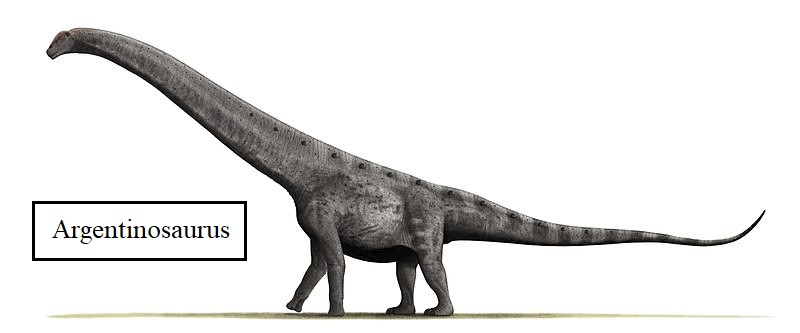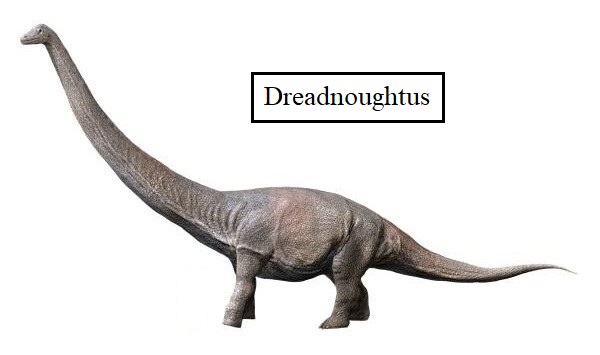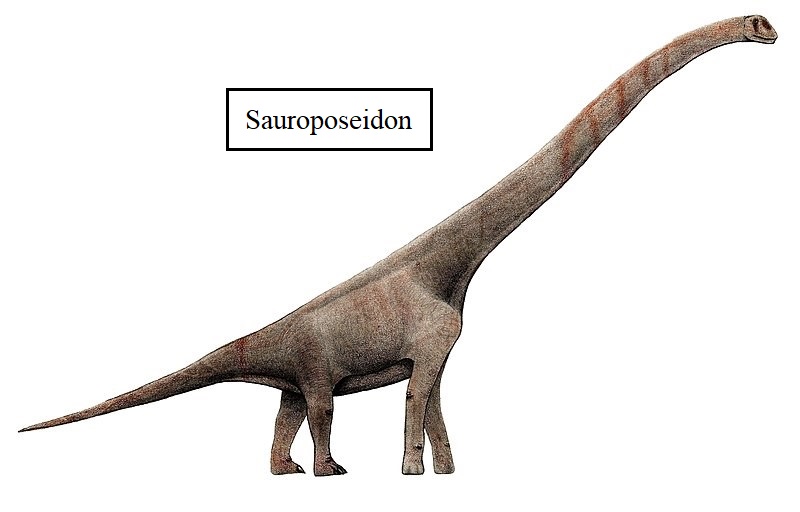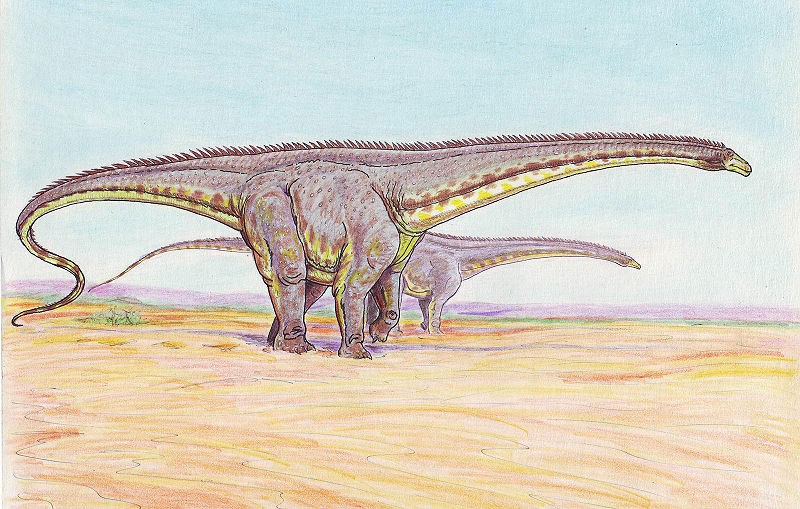It’s almost impossible to declare that one dinosaur was the biggest of them all. Do you mean longest, heaviest, or tallest? Also, it’s very unlikely that paleontologists have actually found the biggest specimen of a dinosaur type. Millions and millions of dinosaurs once lived on Earth, and we’ve found only a small percent of them. We do know that all of the biggest dinosaurs are plant eaters. They come from the group of dinosaurs called sauropods, the long-necked dinosaurs – and most of the very biggest ones have been found in Argentina.
So, how do paleontologists figure out how long or tall a dinosaur was? They need to look at the spine. Put your fingers on the back of your neck. The little bones you feel there that are part of your spine are called vertebrae. When a dinosaur skeleton is found, usually many of the vertebrae are missing. When there is a gap, paleontologists have to guess how many are missing. One way they do this is by comparing the bones they have to other, similar dinosaurs. If a similar dinosaur had, say, 80 vertebrae in its tail, paleontologists would assume that a closely related dinosaur had 80, too. But that might not be true. And it’s hard to know how big those missing vertebrae would be. Scientists have to make the best estimate they can, but they often don’t agree with one another. However, they have provided some great contenders for biggest dinosaur!
Longest:

This might be Barosaurus (BARE-uh-sore-us). It was discovered in 1889 in South Dakota. Its name means slow, heavy lizard, and it must have been. Scientists think it was probably 82-89 feet long. That’s long, but that’s not what put it in contention for longest. Scientists have found a huge vertebra that they think belonged to Barosaurus. From the size of it, the creature it came from was likely about 157 feet long! That’s almost as long as three eighteen-wheeler trucks set end to end.

Another contender is Argentinosaurus (are-juhn-tee-nuh-SORE-us). Scientists have only found 13 of its bones: a few ribs, some vertebrae, and a five-foot-long femur (thigh bone). This isn’t much to try to figure out how big this dinosaur was, but the sizes of those bones have led scientists to estimate that Argentinosaurus was between 75 and 100 feet long. If that top limit is right, Argentinosaurus is definitely among the very biggest dinosaurs.
Heaviest:

Argentinosaurus is also a contender for the heaviest dinosaur, but because estimates of its weight are based on so few bones, some scientists discount it. However, paleontologists have unearthed more than 200 bones of Patagotitan (PAT-ah-go-TIE-ton). These bones were found in Argentina in 2012 and cause scientists to estimate that it weighed about 76 tons. The largest land animal today is the African elephant. Its top weight is seven tons. That means that Patagotitan weighed nearly as much as 11 elephants. And some scientists think at its biggest it weighed as much as 14 elephants.

CC BY-SA 4.0, via Wikimedia Commons
Dreadnoughtus (dred-NOHR-tus) is a definite contender in weight. Its name means fearing nothing. And it’s hard to imagine any creature that it would have to be afraid of. It was discovered in Argentina in 2005. Scientists have recovered almost half of its bones, so they are able to be fairly accurate in their estimates. They place its weight between 54 and 65 tons (though some scientists say that’s too high). It was also about 85 feet long and as tall as a two-story building.
Tallest:

Two stories, however, is not a contender for height. The tallest dinosaurs reached close to the height of a six-story building, though again, it’s tricky to know for sure. Scientists don’t agree on how high up long-necked dinosaurs could lift their heads. Sauroposeidon (Sore-uh-ps-SY-don) is certainly one of the tallest.
It was found in Oklahoma in 1994 and named for the Greek god Poseidon. Poseidon could cause earthquakes, and it probably felt like this dinosaur could do that, too – just by walking. It probably stood just over 55 feet tall, which is, as it says above, almost the height of a six-story building.

Patagotitan shows up again here. Depending on how it carried its long neck, it might have been as tall as a seven-story building. If it carried its head and neck low to the ground, straight out from its body, it’s a contender for longest dinosaur at 122-130 feet. The picture at the right shows Patagotitan at the Field Museum in Chicago
Scientist do not agree which one was the biggest dinosaur. Other lists would include such dinosaurs as Mamenchisaurus (mah-MUN-chi-SORE-us), a creature whose neck was longer than the rest of its body, or Giraffatitan (ji-RAF-ah-TIE-tan), which had the same general build as a gigantic giraffe. We may never know which dinosaur was the biggest. But we can all agree that they were awesome!
Which dinosaur do you vote for as biggest? Do you know a big dinosaur that isn’t in this list? Please leave your answers in the comment section.
